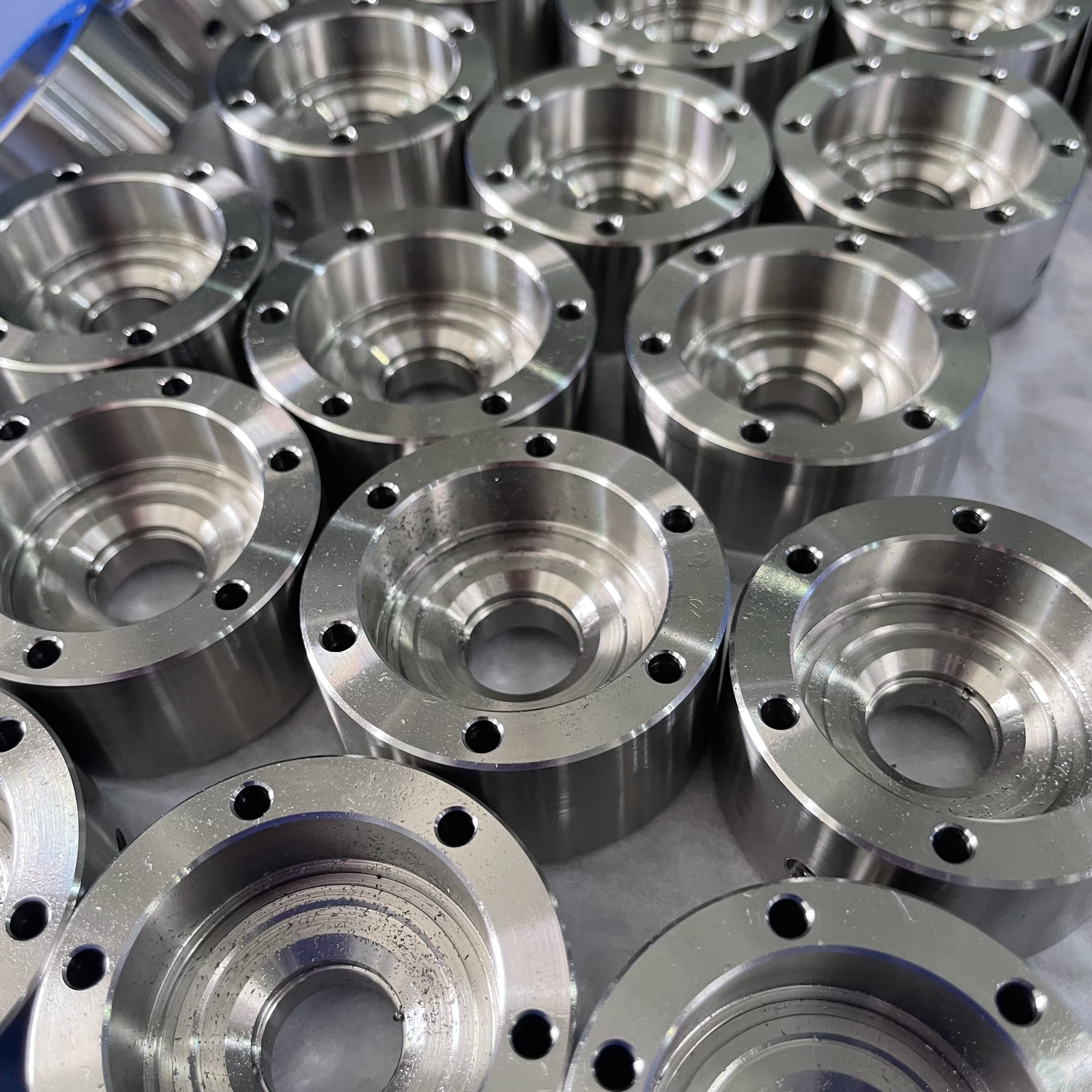Solving the Challenges: Enhancing CNC Prototyping Accuracy and Efficiency

Exploring the Challenges in CNC Prototyping
When it comes to CNC prototyping, achieving optimal accuracy and efficiency is of paramount importance. Improvement strategies in these areas directly impact both product quality and production time. The precision and consistency of the final product are heavily reliant on the accuracy of the prototyping process. Any deviations can lead to defects or inconsistencies, ultimately affecting the overall quality. Moreover, inefficient processes can significantly extend the production time, delaying the delivery of the final product to the market.
In addition to technical limitations, such as machine tool precision and programming challenges, there are also human factors that contribute to hurdles in achieving optimal performance. Human errors in programming or operation can lead to inaccuracies and inefficiencies in CNC prototyping processes. These common hurdles highlight the need for comprehensive solutions that address both technical and human-related challenges.
Enhancing CNC Prototyping Accuracy
Ensuring CNC prototyping accuracy involves addressing key factors that directly impact the precision and consistency of the final product. By understanding these factors and implementing effective strategies, manufacturers can significantly enhance the accuracy of their prototyping processes.
Key Factors Affecting CNC Prototyping Accuracy
Machine Tool Precision
The positioning accuracy of the machine tool greatly influences the precision of the parts produced. Any deviations in the machine tool's precision can result in inaccuracies in the final product. Manufacturers must prioritize regular maintenance and calibration to uphold optimal machine tool precision.
Programming and Tool Selection
Effective programming and meticulous tool selection are pivotal in achieving CNC prototyping accuracy. Errors in toolpath programming or suboptimal tool selection can lead to deviations from the intended design specifications. Manufacturers should leverage advanced CAD software for precise programming and carefully select tools based on material requirements and machining intricacies.
Strategies for Accuracy Improvement
Optimizing Toolpath Programming
Optimizing toolpath programming plays a crucial role in enhancing CNC prototyping accuracy. By meticulously planning the movement of cutting tools, manufacturers can minimize errors and achieve greater precision in the machining process. This optimization involves selecting efficient cutting paths that reduce unnecessary movements, ultimately improving overall accuracy.
Selecting the Right Tools and Materials
The selection of appropriate tools and materials is fundamental to achieving optimal CNC prototyping accuracy. Choosing high-quality cutting tools with suitable geometries and coatings can significantly enhance precision. Additionally, selecting materials that align with the intended design specifications ensures consistent results throughout the prototyping process.
By focusing on these key factors and implementing targeted strategies, manufacturers can elevate CNC prototyping accuracy, resulting in superior product quality and reduced rework.
Boosting Efficiency in CNC Prototyping
Efficiency in the context of CNC prototyping encompasses various elements that contribute to the overall productivity and resource optimization within the manufacturing process. Understanding and enhancing efficiency is crucial for meeting production demands while minimizing waste and maximizing output.
The Role of Machine Parameters
Machine parameters play a pivotal role in determining the speed and accuracy of CNC prototyping processes. By fine-tuning parameters such as feed rates, spindle speeds, and cutting depths, manufacturers can optimize the machining operations for maximum efficiency. Additionally, advanced machine parameter optimization techniques enable precise control over tool movements, resulting in reduced cycle times and enhanced overall productivity.
Energy Optimization Techniques
Implementing energy optimization techniques is essential for sustainable and cost-effective CNC prototyping operations. Leveraging energy-efficient machining technologies, such as regenerative braking systems and intelligent power management, can significantly reduce energy consumption without compromising process efficiency. Furthermore, integrating smart scheduling algorithms to coordinate machine operation with off-peak energy hours contributes to substantial energy savings.
Efficiency Improvement Strategies
Implementing Lean Manufacturing Principles
Adopting lean manufacturing principles is instrumental in streamlining CNC prototyping processes for improved efficiency. By eliminating non-value-added activities, reducing lead times, and optimizing workflow layouts, manufacturers can minimize waste and enhance overall productivity. Embracing a culture of continuous improvement empowers teams to identify inefficiencies and implement targeted solutions for sustained operational excellence.
Enhancing Machine Tool Performance
Enhancing machine tool performance involves leveraging advanced technologies and maintenance practices to ensure optimal functionality. Regular equipment maintenance, including lubrication schedules and precision alignment checks, is essential for preserving machine tool accuracy and reliability. Additionally, integrating predictive maintenance systems enables proactive identification of potential issues, minimizing unplanned downtime and maximizing production uptime.
By prioritizing the role of machine parameters, implementing energy optimization techniques, embracing lean manufacturing principles, and enhancing machine tool performance, manufacturers can achieve significant improvements in efficiency across CNC prototyping operations.
Synthesizing Improvement Strategies for CNC Prototyping
Integrating Accuracy and Efficiency Enhancement Techniques
Achieving optimal CNC prototyping accuracy while maximizing efficiency requires a delicate balance between quality and speed. Manufacturers must prioritize precision without compromising on the pace of production. This integration involves leveraging advanced technologies that streamline processes, ensuring that each step contributes to both accuracy and efficiency. By harmonizing these enhancement techniques, manufacturers can achieve superior results within shorter timeframes.
Continuous learning and adaptation are fundamental aspects of integrating accuracy and efficiency enhancement techniques in CNC prototyping. Embracing a culture of ongoing improvement empowers teams to identify opportunities for refinement and innovation. Through continuous learning, manufacturers can adapt to evolving industry standards, technological advancements, and market demands, further enhancing both accuracy and efficiency.
Future Trends in CNC Prototyping
Technological advances are poised to revolutionize the landscape of CNC prototyping. Innovations in machine learning algorithms, automation, and real-time monitoring systems will drive unprecedented levels of precision and efficiency. These advancements will enable manufacturers to optimize processes with unparalleled accuracy while meeting increasing production demands.
Sustainability and material waste reduction will continue to be pivotal focuses in future CNC prototyping endeavors. The integration of eco-friendly materials, recycling initiatives, and energy-efficient technologies will not only enhance operational sustainability but also contribute to substantial cost savings.
See Also
Perfecting CNC Machining: Precision, Prototyping, and Material Choices
The Significance of CNC Cutting Precision: Delving into Engineering Accuracy
Mastery of CNC Turning: Crafting Precise RC Upgrade Components
Streamlined CNC Machining Solutions for Accurate Manufacturing
CNC Precision Components Production: Impact on Manufacturing Expenses
About US
Follow Us
Your prototype holds unparalleled significance, and we deeply value its uniqueness. Collaborating with you during the preparation phase for running your prototype or parts is a commitment we gladly embrace. Whether it's a single part or a complex assembly, we are dedicated to selecting the optimal tools and pathways to bring your envisioned product to life.
At Precision Fab CNC Machining, we specialize in producing parts for prototypes, short runs, and high-volume production. Our prototyping machine capabilities extend across metal, plastic, and wood machining, with welding fabrication services available to complement and finalize your prototype if required.
Address
Address: Room320 10F, Building A,Nanshan international building, Dayawan District, Huizhou, Guangdong, 516001 China
Contacts
billy@timaycnc.com

